The Festival of the Regions
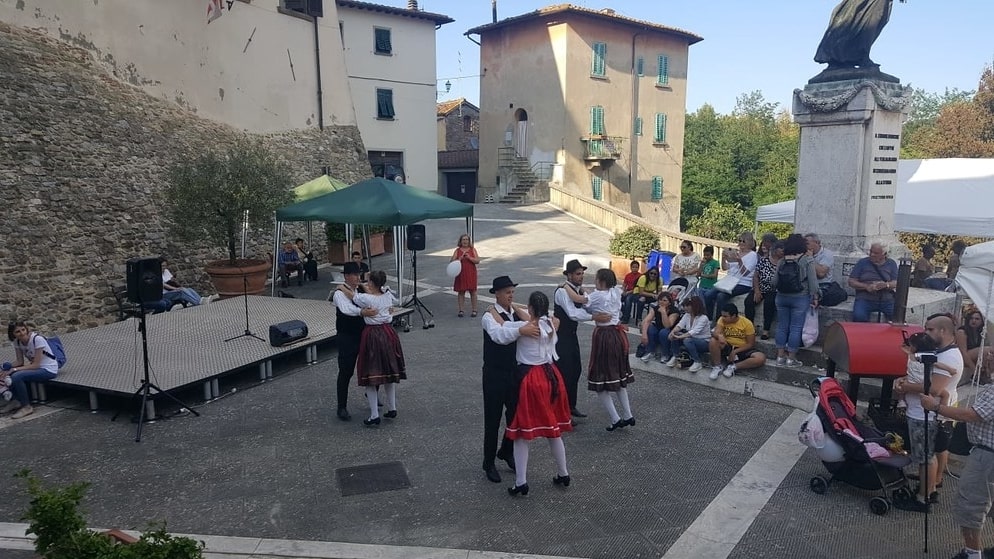
For over ten years, during the last weekend of May, the “Bucine un Comune in Fiore Association” has organized the traditional Festival of the Regions in Bucine.
It is a consolidated occasion to welcome national and international visitors. Delegations from the Regions of Italy and foreign countries join the festival with their heterogeneity of traditions and folklore to enrich the cultural heritage not only of Bucine and Valdambra, but of the whole Valdarno area. In fact this is an event to make our territory known and visited, but also a great chance to travel between the regions of Italy and the various nations that are present at the festival.
A journey of flavors, aromas, colors, traditions,typical products, dances, costumes and popular songs to immerse yourself in an atmosphere of celebration and conviviality.
For more information visit the website:
Historical Re-Enactment And Game Of The Well
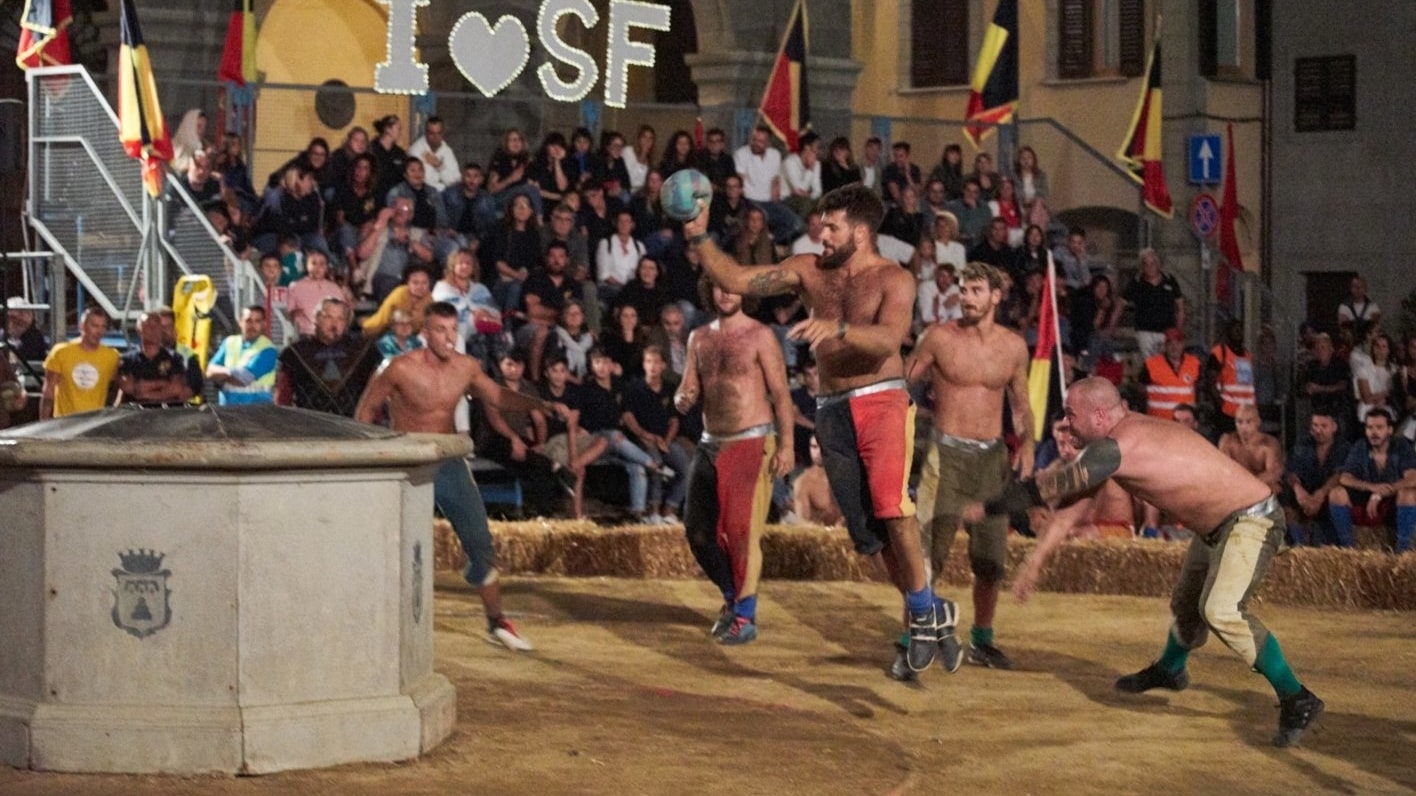
The traditional Forgiveness Feasts are celebrated annually in Montevarchi on the first Sunday of September. This is the occasion for citizens and visitors to relive one of the most beautiful episodes of Montevarchi history, the return of the “Lord”, the valiant Captain of the Guelphs of Tuscany, the Count Guido Guerra. Accompanied by Charles of Anjou, Count of Provence, to the Church of San Lorenzo in Montevarchi, Guido Guerra came bearing the gift of a precious Relic of the Madonna. This important historical event was also reproduced by Andrea della Robbia in the bas-relief preserved in the Museum of Sacred Art of the Collegiate Church of Montevarchi.
The Game of the Well takes place during the Forgiveness Feast, it is a traditional game that is repeated in its ancient modes in the frame of Piazza Varchi. The game was probably born from the need to decide who had the priority among the 4 gonfaloni ( Banners)of the historical center to draw from the city well during the months of drought. The priority was valid for one year from the first Sunday of September and this anniversary represented the fulcrum of the celebrations of the city’s forgiveness. The event has its own rite to celebrate that begins on Saturday morning with the reading of the notice by the Herald and the preparation of the streets of medieval arts and crafts. In the afternoon the blessing of the gonfaloni takes place and then the races. Montevarchi celebrates a real festival in medieval style with dinners, shows and animation.
On Sunday afternoon after the final race and the declaration of a winner among the 4 Banners.It is an exciting game that consists in the attempt of the team to center the target, that is the opening of the well. At the end of the game the Podestà delivers to the Magistrate and to the Captain of the gonfalone winner a characteristic “mezzina”, a typical container of water that symbolizes the conquered priority to draw the precious liquid for their people. A weekend that brings the city back in time, to its origins, an event absolutely not to be missed for its beauty and charm.
Market Of Used And Hobbyists- “ Flea Market”

The lively Antiques Fair of the Valdarno takes place in Terranuova to celebrate a deeply rooted skill of local craftsmen (stonemasons, blacksmiths, carpenters and furniture makers,tailors, glassmakers, shoemakers, etc. ). Every second Sunday of the month (except for August), more than a hundred exhibitors meet: for all day, along the streets of the old town you can find furniture, ceramics, jewelry, sculptures, paintings, objects in iron and copper and curiosities among the most varied.
The Feast Of Forgiveness In Terranuova
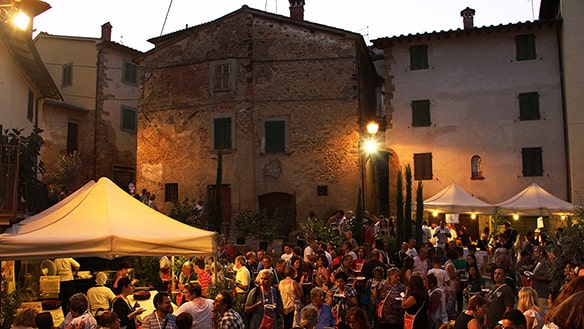
For almost four centuries, every year the appointment with the fair of agriculture has been renewed: it is better known as a feast of forgiveness (the name refers to a probable religious origin, relating to indulgences). It is held on the Monday following the fourth Sunday in September and thousands of visitors arrive from every part of Tuscany and Italy to walk among the stalls, admire and buy the great variety of objects, tools and trinkets on display. The Terranuovesi obtained permission to hold the Fair in 1615, by Grand Duke Cosimo II. The choice of the month of September was perfect for the sale of “bigoni” and other tools for the farm country: people began to come from everywhere to sell, buy and have fun. The City Council was soon forced to allocate funds “to keep the patrol in time of Fair, to avoid scandals and confusion that could intervene in the great meeting of the peoples”.
In return the sacred functions were multiplied and the papal bills of forgiveness were obtained, to acquire indulgences going to pray in church, the Parish Church of Santa Maria. In the early nineteenth century – as today – there was livestock of every species, haberdasheries and manufactories, wine containers, terracotta, decoy birds, loose horse races and fireworks at the end of the feast. In 1615 the Grand Duke of Tuscany Cosimo II granted the right to hold a fair every year on the fourth Sunday of September in the village of Terranuova.
It wasn’t easy but thanks to the senator and State Official Bartolomeo Concini, who had pleaded the cause, the “Terranuovesi” (citizens of Terranuova) obtained that concession. Since then the September fair has been held regularly (also in wartime) although initially there was an obligation to renew the request every three years. The choice of the period was right because it was the time when important work such as harvesting was carried out in the countryside. Later they began to celebrate the Day of Saint Titus the Martyr, in the same period the miracle worker to whom we turn in case of persistent bad weather or excessive drought and whose remains, coming from the catacombs of Priscilla in Rome, were transferred to Terranuova in 1665.
Bird Fair

Leading event of Forgiveness in Terranuova, the Bird Fair has reached the 406th edition. The Fair is held in the public park at the Ciuffenna creek and, although it continues to be an
important event for the sale and the exchange of decoy birds, in recent decades it has expanded and has become a market exhibition of tropical birds, and pets. The link with the tradition, however, has been maintained thanks to the recent reintroduction of the exposition of the animals from stable and from yard, and to the competition “The golden whistle”, a
contest of imitation of sounds of birds that brings in the country the best “fischiatori” – whistlers – in Italy. The Spring Fair of Birds has been held for several years in spring.
Rificolona

On 07 September, the eve of the Feast of the Nativity of the Madonna, we celebrate the Feast of the Rificolona, a Florentine tradition imported to San Giovanni Valdarno many years ago. But what is the Rificolona? The feast of the Rificolona was born in Florence, when the peasants coming from the countryside got to Florence in Piazza della Santissima Annunziata, on the eve of the feast of the Nativity of the Madonna (08 September); these pilgrims illuminated their journey with torches and lanterns of various kinds so also the streets of the city were full of light decorations , it was a spectacle for the Florentine population.
The Florentines who attended this bright “parade”, called the women of the procession – generally sturdy awkward dressed – “fierucolone” and hence the name rificolone. The rificolones were inspired by the lanterns of the pilgrims, they were made with paper puppets representing the sturdy peasants, a lamp was applied under the skirt of rificolone and were hung on a long cane and carried around the city. Also in San Giovanni Valdarno, as in Florence, the feast of Rificolona has religious origins and is linked to the miraculous image of Our Lady of Grace and the celebrations related to her coronation. The current form of the Rificolona festival – parade and blessing of the rificolone and children – was born after the Second World War, thus becoming the Rificolona dei Bambini and characterizing the Sangiovannese edition.
Salacca Festival

The Salacca Festival takes place on Ash Wednesday. It is dedicated to salted herrings, called salacche or saracche in the local dialect.The tradition of celebrating the beginning of Lent by eating salacche derives from the religious precept that imposes abstinence from meat. The festival is held on the right side of the Arno river, at the level of Lungarno Sette Fratelli Cervi where in the early afternoon the food stalls are set up.
Carnival Uffizi

One of the most typical Sangiovannese manifestations is the celebration of Uffizi of Carnival: definitely one of kind, it is celebrated during the five Sundays before Mardi Gras, the last day of Carnival. The term “uffizi” refers to the ecclesiastical meaning of “ to officiate”, recite the office or celebrate the Office of the dead with offerings that often consisted of wax, money or anything else needed at the oratory of Santa Maria delle Grazie for the celebrations in suffrage of the deceased.
In fact the seven suffrage companies, created in the second middle of the seventeenth century, met in this church in the carnival period to remember their loved ones and not only. That occasion of meeting assumed a value of celebration and the Uffizi, although different in number according to the number of companies, are still held in the premises of the current Basilica with rich lunches based on typical local recipes and Sangiovannese stew ,preceded by the parade of the “carroccio “with pages in costume in memory of the procession with the delivery of the offerings. The five Sundays include the succession of the Office of Saint Anthony, Office of Saint Lucia, Office of Industry, Office of the Vicariate and Office of Women or of Providence.
Exhibition Of Nativity Scenes In Laterina
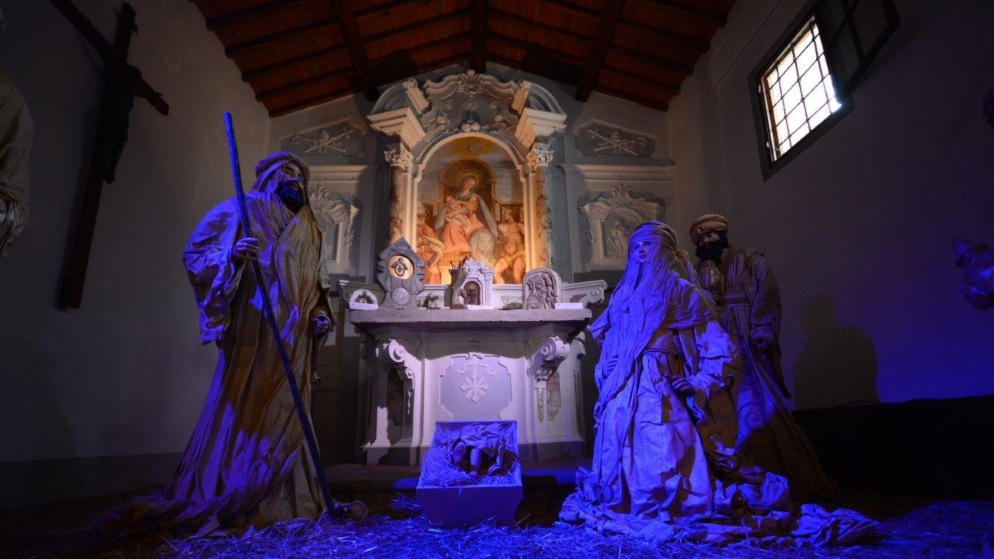
The event was born many years ago in the local parish of S.S. Ippolito and Cassiano, with the aim of making known and preserved the ancient art of making cribs. Since then, every year, in the period around the feast of the Immaculate, the hallways of the houses, the churches of the historic center host dozens of works that now arrive from all over Italy and from all over the world: artistic or naif works, classical or design nativity scenes, in all shapes and in the most varied materials.
An important section is made up of the Schools which participate with numerous imaginative and original cribs created by their students. On the evening of the last day a Jury looks at the nativity scenes decreeing the winners but anyone can STILL vote for his favorite crib and help him to win: a sort of a popular jury that works alongside the jury of professionals in the field. During the event the village of Laterina is also animated by a multitude of stalls, where the Women of the Village (willing women who create handmade products for the occasion) and the most famous companies of our province sell their handicrafts: embroidery, Christmas decorations, food and wine, wines, and much more.
The Church of San Biagio, recently restored, is open to the public to host a precious Exhibition of Artistic Nativities or Art Exhibitions. In the streets of the center you can also admire personal exhibitions of local artists, expressions of the most varied abilities, with the possibility of being accompanied by the Elf-guide through the history and art of the village. In addition , every corner of the village is involved in particular representations like the Living Nativity, the Santa Claus Village with lots of Toys Factory, artificial snow and soap bubbles shower. Santa’s Carriage and the Station, touring band, food stands and Bombolone Festival, make the atmosphere even more festive and joyful for young and old.
The event has now reached the XXIII EDITION and will take place in December on 6-8-13.
Medieval Laterina Of Iron And Fire
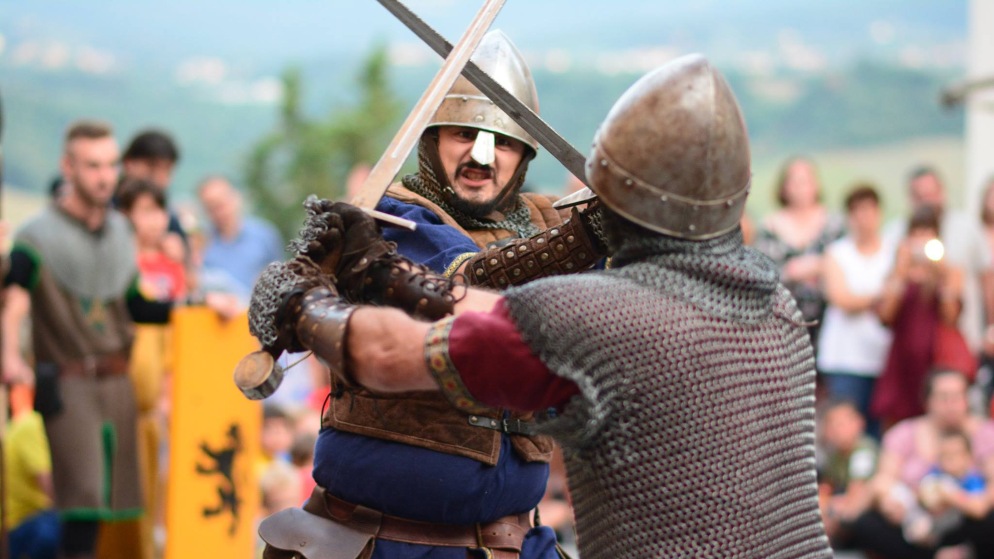
The Cultural Association “La Rocca A.P.S.”, located in the town of Laterina Pergine Valdarno, is officially born on January 29, 2007: it promotes cultural initiatives and plays a role of particular importance in the territory of Laterina as a strong youth aggregation center and promoter of the historical and artistic value of the village. The event that most represents the activity of the Association is definitely the Laterina Medieval Festival, during which, in the last weekend of July, for 16 years now, the Castle of Laterina is transformed, returning to its ancient splendor. The last edition of the Laterina Medieval Festival was not particularly lucky: the bad weather that scourged the whole province of Arezzo, in fact, heavily hit the event, causing serious economic problems to the Organising Association, which, however, in the interest of the enhancement and protection of the territory, didn’t lose heart and proposed for 2020 an even richer program than the traditional billboard!
Two “propitiatory” evenings were added to the usual weekend of Festa: it started on July 17 with “Those who are waiting for the Medieval Festival on Friday 17”, an evening dedicated especially to young people, with the extraordinary opening of “Master Mescitore di Birra” and music in the Municipal Gardens of Laterina. On Saturday, July 18 there was the Medieval Dinner ( it has a limited number), initiative to lick your lips, which in past years received a great success. The following week the 3 days of Traditional Festival take place: Medieval Laterina, free admission. Many people will animate the streets of the small medieval village, with conferences, theatrical performances, music and magical atmospheres: companies of musicians, acrobats, jesters and jugglers will amuse visitors who can also attend fire shows, Knight fights, falconry shows.
In the days of the Festival taverns, shops and restaurants are open until late night and, thanks to the collaboration with Aic Toscana, even people with celiac disease can feast in company.
It is possible to see the Castle Guard in the military camp and the war machines, attend historical processions and re-enactments, engage in games of skill or simply walk hand in hand among the romantic squares and villages of the Castle of Laterina. Medieval Laterina is part of the Calendar of Historical Events of the Province of Arezzo and the Tuscany Region.
FOR INFORMATION:
info@laterinamedievale.it
Facebook: Medieval Laterina
Instagram: @laterinamedievale
Europe at table
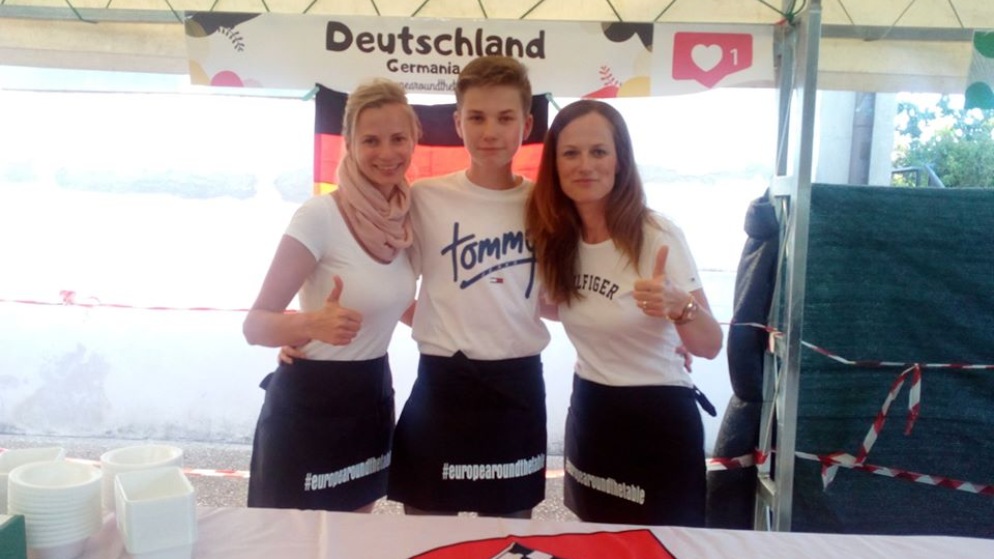
On June 5-7, the second edition of “Europe at table” event is held in Pergine Valdarno, an event promoted within the network of small municipalities belonging to the Cultural Village of Europe. The initiative is aimed at making known and sharing the culinary traditions of different countries.
Food becomes an opportunity of meeting people from different parts of Europe, a way to promote culture, traditions and folklore. The Cultural Village of Europe is a vehicle of knowledge and mutual enrichment starting from the diversity of each one.
Feast Of The New Oil
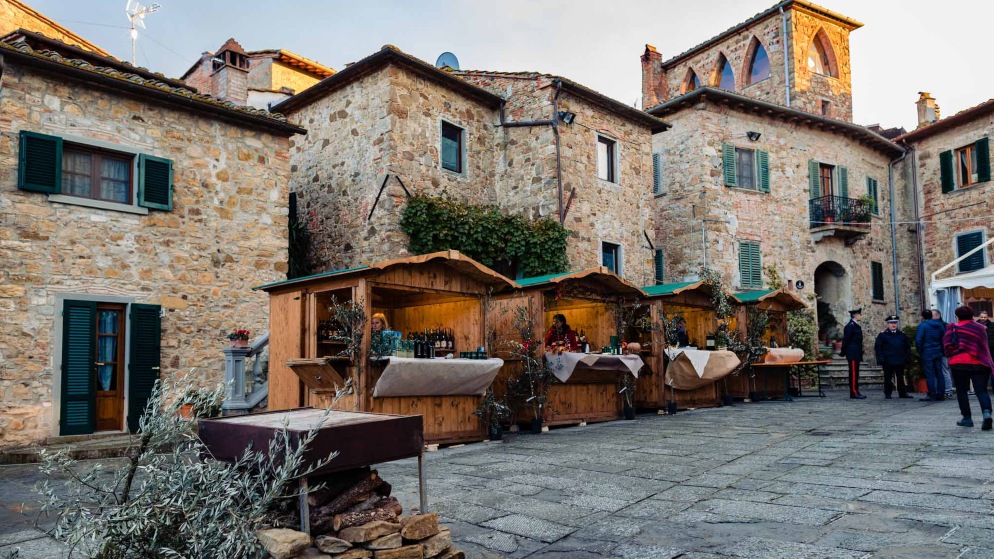
The Festa dell’Olio Nuovo takes place in the historic center of Pergine Valdarno, in the municipality of Laterina Pergine Valdarno. At the 28th edition in the year 2019 it has as main purpose the promotion of olive oil, for which the town of Pergine Valdarno is known and appreciated at Provincial and Regional level. It is held annually on the first days of November, events related to the disclosure of information on the product “oil”, from the olive tree to finished product, alternate during three days. In the main square of the village local producers display the products of agricultural holdings existing exclusively within the area of Pergine Valdarno. Streets and squares show the craft market and typical products of territory, they display and sell food and crafts, in addition to the food stand “Garden of Gusto”.
Varied events are offered during the three days of the event, from the Dinner of Ghiott’Olio with olive oil-based dishes, sporting events such as mountain biking and walks to “Le vie of the Oil”, conferences and thematic reviews on the Oil, concerts of music and Street Band and finally play areas for children.
